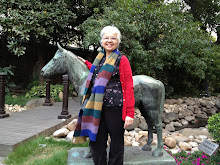“It’s the grandmother’s job to teach the children.” – a Mono elder
Last night I attended a Halloween party at the new
Julia V. Clark, author of Minorities in Science and Math, states, “story-telling and demonstration are historic teaching methods in the Indian culture.” Several years ago I discussed learning styles, particularly the visual learning modality, with North Fork Mono educator Connie DeSilva. She told me that children in her Mono Language and Culture classes learned through watching, listening and doing. “Isn’t that how all children learn?” she asked. She spoke of learning from her grandmother. “She died when I was eleven years old. I was privileged to go with her to pick sticks to make baskets, and to gather food. I learned by watching her. I learned by listening to her and many of the Indian elders.”
“How a man get lost, mountains all around?” my own father’s mentor Pinky Bethel used to ask with some exasperation. And if you stood on my front deck you’d understand. I live on the side of Omabi. Look behind my house, up the hill, and you’ll discover the top of Omabi is different from the top of Shut Eye, that peak you see to the east. Peckenpaw Ridge (that’s the ridge between my house and Shut Eye) doesn’t look anything like Thornberry Ridge, (south west of Omabi). You won’t get lost if you study the “mountains all around.” When I quoted Mr. Bethel’s remark to Mrs. DeSilva as an example of keen visual perception among the Mono, she agreed. She spoke of her love of nature and how she notes the shapes of mountains, the colors of rocks and the growth patterns of trees to find her way. “Most Indian children are wonderful artists,” she added, “Isn’t that visual?”
Observing one’s environment to find the way through the woods and find the way home, producing exquisite art, baskets and beading are obviously visual skills. However they do not automatically transfer into text-related visual perception skills as defined by Jerome Rosner, namely the child’s ability to analyze patterns of light (printed letters and numerals [and] geometric designs) in a detailed, organized way. “Instruction in the form of story telling, story books with pictures, and video demonstrations” are suggested as beneficial for Native American learners. (Craig, 2004) These tools provide a valuable transition from concrete visual experiences to the more abstract letters and numbers on a page. (Gailey, 1993)
So, call me Grandma, and understand my heart. I write my little mathematical adventure stories to help kids from all cultural backgrounds transfer their “real world” visual perception strengths to the learning of mathematics.
Resources:
Clark, Julia V. Minorities in Science and Math. ERIC Clearinghouse for Science Mathematics and Environmental Education,
Craig, Gloria. “Dr. Gloria Craig Introduces Section 3 Concepts” Module 2 section 3. n.d. South Dakota State Department of Education. 2004
Gailey, Stavoroula K. “The Mathematics—Children’s Literature Connection.” Arithmetic Teacher. January 1993:258259
Rosner, Jerome. Helping Children Overcome Learning Difficulties.

No comments:
Post a Comment